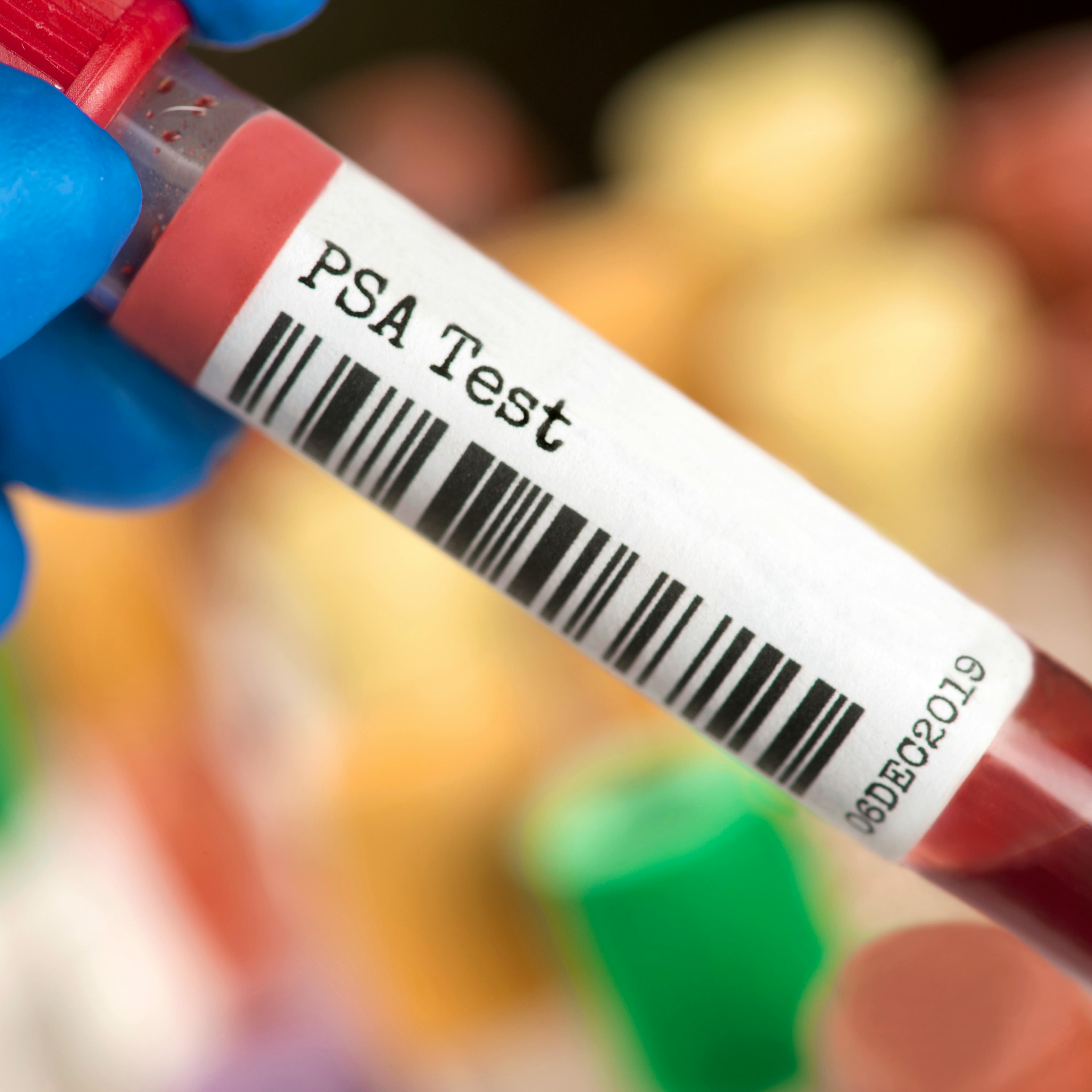Key Takeaways
Elevated PSA doesn’t always mean cancer — it can result from benign conditions like an enlarged prostate, inflammation, or infection.
PSA levels above 10 ng/mL are typically considered high and warrant further testing; “normal” varies by age and family history.
Symptoms come from underlying issues, not PSA itself — include frequent urination, weak stream, or pelvic pain.
Diagnosis involves follow-up tests such as repeat PSA testing, DRE, imaging, or biopsy to determine the cause.
Healthy habits may help lower PSA — eat prostate-friendly foods, exercise regularly, and maintain a healthy weight.
An elevated PSA level is a valid cause for concern, but it does not always mean prostate cancer is present. PSA (prostate-specific antigen) is a protein produced by both normal and cancerous prostate cells. Higher-than-normal levels may point to prostate cancer, but can also result from non-cancerous conditions such as an enlarged prostate (benign prostatic hyperplasia), inflammation, or infection.
What Is Considered an Elevated PSA?
A PSA level below 4.0 ng/mL is generally considered normal, but there is no universal 'safe' level. Urology specialists typically use age-adjusted PSA thresholds, as shown in the chart below Levels above 10 ng/mL are typically considered high and may require further testing.
What's a Normal PSA Level by Age?

Family history matters: Men with a father or brother who has had prostate cancer are at higher risk and should consider earlier and more frequent PSA monitoring, even if their results fall within typical ranges for their age
Elevated PSA Symptoms
An elevated PSA level itself does not cause symptoms. However, underlying prostate issues may lead to:
- Frequent or urgent need to urinate
- Weak or interrupted urine stream
- Difficulty starting urination
- Pain or burning during urination
- Blood in urine or semen
- Pelvic or lower back discomfort
If you experience any of these symptoms along with a high PSA, you may want to consult your healthcare provider.
Elevated PSA Causes
It is possible for elevated PSA levels to occur for a number of reasons, including:
- Prostate cancer
- Benign prostatic hyperplasia (BPH)
- Prostatitis (inflammation of the prostate)
- Urinary tract infection
- Recent sexual activity
- Recent prostate exam or injury
Again, a high PSA does not confirm cancer. Rather, it signals the need for further evaluation.
Diagnosis of Elevated PSA
A PSA test is often done as part of a routine screening or when symptoms suggest a possible prostate issue. If PSA levels come back elevated, your provider may recommend additional tests to better understand the cause and determine the appropriate next steps. The most common evaluations include:
- Repeat PSA testing to confirm whether the elevation persists
- Free vs. total PSA ratio to help distinguish between benign and cancer-related causes
- Digital rectal exam (DRE) to check for physical changes in the prostate
- Imaging (MRI or ultrasound) to visualize the prostate for abnormal areas
- Prostate biopsy to confirm the presence of cancer if needed
How to Naturally Lower Your PSA Levels
Some research suggests that certain diet and lifestyle changes may help lower PSA levels and support overall prostate health. These adjustments are not a replacement for medical care, but they may complement your treatment plan and benefit long-term health.
Eat a diet rich in prostate-friendly foods.
Some foods may support prostate health and help keep PSA levels in check. While diet changes aren’t a cure, research shows they can reduce inflammation and promote healthier prostate function. Try adding the following to your routine:
- Tomatoes and tomato-based products – a good source of lycopene, an antioxidant linked to prostate health
Cruciferous vegetables – broccoli, cauliflower, Brussels sprouts, and cabbage
Fatty fish – like salmon or sardines for omega-3 fatty acids
Nuts and seeds – provide healthy fats and zinc, which supports prostate function - Berries and citrus fruits – offer vitamin C and other antioxidants
- Green tea – rich in natural compounds that may help protect prostate cells
Limiting processed foods, red meat, and high-fat dairy may also lower prostate risks.
Increase physical activity.
Regular exercise helps maintain a healthy weight, reduce inflammation, and support hormone balance, all of which are linked to prostate health. Aim for at least 150 minutes of moderate aerobic activity each week, along with a couple of strength training sessions.
Maintain a healthy weight.
A healthy weight lowers the risk of aggressive prostate disease and helps stabilize PSA levels. Balanced nutrition and regular physical exercise support weight management and lower factors that could potentially elevate PSA.
Next Steps After an Elevated PSA Result
An elevated PSA level is not a condition that requires treatment on its own. It is a test result that may signal an underlying issue. After further evaluation, your provider will recommend next steps based on the cause.
Monitoring PSA Levels
Further testing that does not reveal a serious prostate condition may lead your provider to recommend regular PSA testing and follow-up exams to track any future changes.
Infection or Inflammation (Prostatitis)
When prostatitis or a prostate infection is the cause, treatment usually includes antibiotics and supportive care. PSA levels often return to normal after the infection clears.
Enlarged Prostate (BPH)
If an enlarged prostate is contributing to elevated PSA, treatment may include medications to improve urinary symptoms or procedures to reduce prostate size and improve function.
Prostate Cancer Treatment
If a prostate biopsy confirms cancer, treatment options depend on the cancer’s stage, your PSA level, and overall health. These may include:
- Active surveillance for low-risk cancers
- Surgery (prostatectomy)
- Radiation therapy (external beam or brachytherapy)
- Hormone therapy
- Other advanced treatments, such as cryotherapy or high-intensity focused ultrasound (HIFU)
Your care team will work with you to determine which approach is most appropriate for your individual situation.
FAQs
Yes. In some cases, elevated PSA caused by temporary factors such as prostatitis, recent sexual activity, or even vigorous exercise can return to a normal range over time without treatment. Your provider may recommend retesting to monitor changes.
To avoid false elevations, avoid ejaculation, vigorous exercise, and urologic procedures for 24–48 hours prior to the test. Always follow your doctor’s pre-test instructions.
No. High PSA levels can result from many non-cancerous causes, such as benign prostatic hyperplasia (BPH) or prostatitis. Elevated PSA is a signal for further evaluation but does not confirm the presence of prostate cancer.
Most men should begin between ages 50–55. Those with higher risk factors, including family history or African American heritage, may start as early as 40–45.
The timing depends on your PSA level, age, and individual risk factors. In many cases, providers recommend repeating the test in three to six months for a mildly elevated result.




